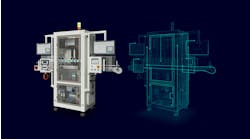For those out there whining about how automation and technology is eliminating jobs, I wanted you to be aware that technology will be leaving you behind. There is no doubt; it has happened in the past, and it will continue to. Any thoughts or plans to stop it will just ensure technology, and others using it, will put you further behind.
Instead, advanced manufacturing and design must embrace technology to create the projects, products and jobs that result. You don't have to look further than the demise of the horse-drawn carriage and the rise of the automobile to see how technology is a good thing. The automotive industry is huge, and it created many high-paying jobs and many levels of suppliers. And, let’s face it, most coachmen probably had to learn to drive a car or a taxi.
Here's a secret. If you work at Wallee World and unload trucks, you are going to be replaced by robots and drones that will work harder than you. It's inevitable. It's not because of automation; it's just how the real world works. Automation is needed to increase the productivity, in this case, of unloading trucks. That's low-hanging fruit due to a significant percentage of workers there who don't work very hard or productively, except when necessary to avoid work. These contracted droids won't steal either, like some of the contracted humans do.
Of course, many employees at Wallee World are excellent, efficient workers, and they would like to develop and expand their skill sets. You know who you are, even if management doesn't. So, be aware that those robots are going to need to be designed, improved, built, operated, managed and maintained. Any of those tasks will likely pay better than placing the product on the shelf that the robot brings to you in the near future.
Can't do this work due to your skill set or lack of one? Duh, get a new skill set. Yes, it may be difficult and take a while, so start now. Today. Set your sites high and then promptly exceed them. I'll be the first to tell you, “Great job.” For those of you out there who want a rewarding and well-paying job, you are going to have go out and get trained in a technology or discipline you enjoy.
Many of you reading this are already in the manufacturing, operations and design arena or support it in some fashion. Please help push today's generation into state-of-the-art manufacturing and other high-tech products and technology. The cheap labor and low-tech manufacturing will remain cheap or cease to exist. Technology will replace jobs and those seeking to dumb down things will not stop it. Even technicians, engineers and managers should be stepping up their skills.
When selecting a skill to develop, know that some sources of income and whole industries in the United States will be much different or not exist in the future. It happened to the textile, steel and machine-tool industries here to a varying extent and other industries, as well. I have driven past and flown over many huge, empty parking lots that used to be full of well-paid automotive workers, high-tech automation and many robots. Low-cost labor and trade agreements are just some of the many reasons it happened. Even thieving countries like China had a hand in it, by stealing the technology, design and even the labor.
Technology and automation need to be embraced and need to be developed here, built here and kept here. If a high technology is developed here, then use it to manufacture here; or, I assure you, China will steal it or likely already has. The manufacturing opportunities and employment they offer are other reasons to keep them close to home.
The National Science and Technology Council (NSTC, www.whitehouse.gov/ostp/nstc) thinks manufacturing plays an outsized role in the U.S. economy. Tom Kalil, deputy director for Technology and Innovation at the Office of Science and Technology Policy, claims it is the greatest economic multiplier of any other sector by creating four additional jobs for every manufacturing job. I agree that the manufacturing is a critical sector for driving prosperity and security. Kalil also claims, "Economic impacts grow as we add next-generation technologies; advanced manufacturing produces sophisticated and exclusive products that we can sell around the world, leading to greater economic prosperity and increasing the job multiplier to 16:1."
ALSO READ: The future of manufacturing: Only the innovative need apply
Again, I cannot agree more. From a U.S. standpoint, the latest technologies should be developed here, made here and sold everywhere. The knowledge, research, development and manufacturing lead to wide-ranging know-how. That know-how requires a skilled, educated and well-paid workforce. Throughout my career in system integration and custom machine building, I have seen firsthand the reach of technology from the source manufacturer to many sub-suppliers and service providers.
Technology needs a capable workforce which leads to opportunities for skilled or highly skilled labor, engineering and business. The NSTC is confident that skilled craftsmen, technicians, designers, planners, researchers, engineers and managers will be in high demand, and it claims that millions of manufacturing jobs could remain unfilled due to skills gaps.
Although there is no doubt that technology will leave some of you behind, just as electric lights dimmed the gas lamps, the future and American innovation will have a job opening available for the skilled and educated. To get with technology you will need to develop your skills and find apprenticeships and on-the-job training will keep you in front. Technology won't wait to be applied.






